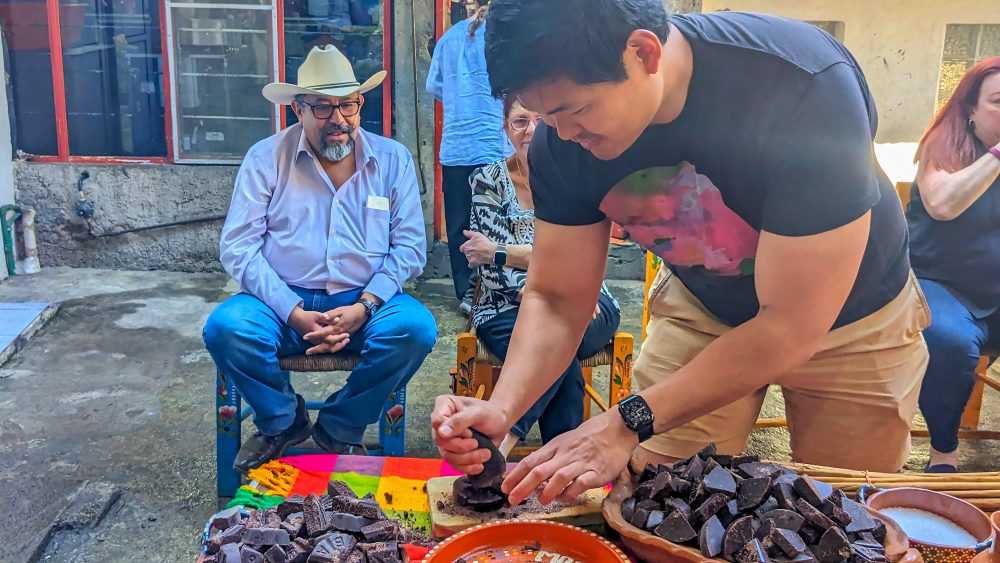One of my favorite moments of the week was seeing the face of our tour guide, Paco, light up as we passed an unassuming tiny shop that only sells one thing: panqué de nata, a dense, moist muffin. Paco bought a round for our group, then stole only the tops off of a couple. We then ambled through the Alameda, the oldest public park in the Americas, dating all the way back to the late 1500s. Daytime in the Alameda brings lots of roller skaters—the paths in the park are apparently the best in the city for skating—and vendors encircling the fountains selling esquites, cups of corn kernels with epazote, cheese and more. In the evenings, dance parties form around the fountains. The organizers—that is, the person who brings the music—just asks each dancer to pitch in five pesos to join the party.
Journeying through Juárez
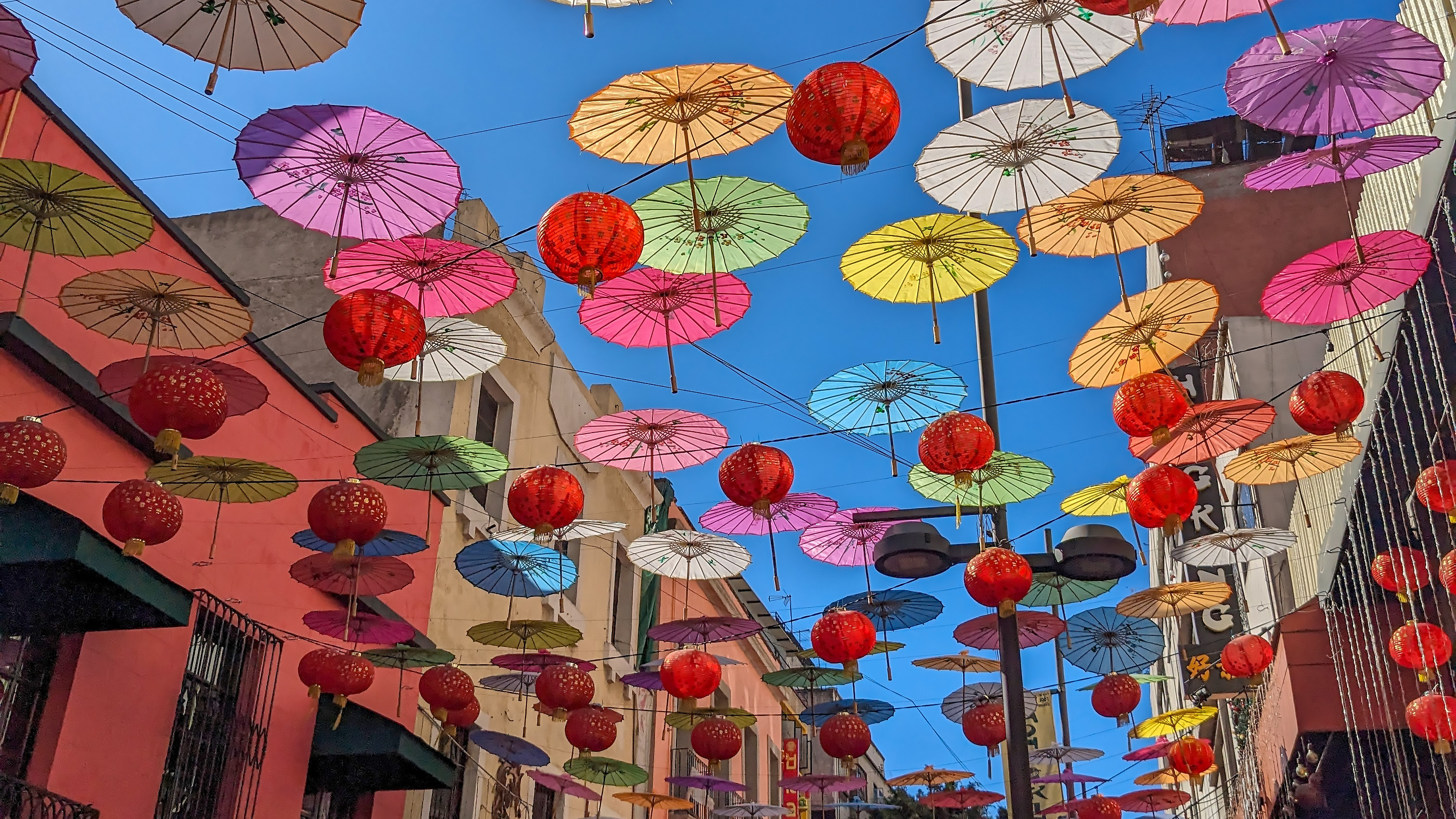
Our second day took us to the neighborhood of Juárez, which felt like a different world. Leafy trees line the streets and people sip coffee and hot chocolate, or atole and champurrado—two maize-based drinks that date back to the Aztecs—at quiet sidewalk cafés. After winding our way through the Mercado de Juarez, where we sampled an array of Oaxacan cheeses paired with sweet guava paste, we headed to our first cooking class at Casa Jacaranda, located in a gorgeously renovated building just blocks from the market.
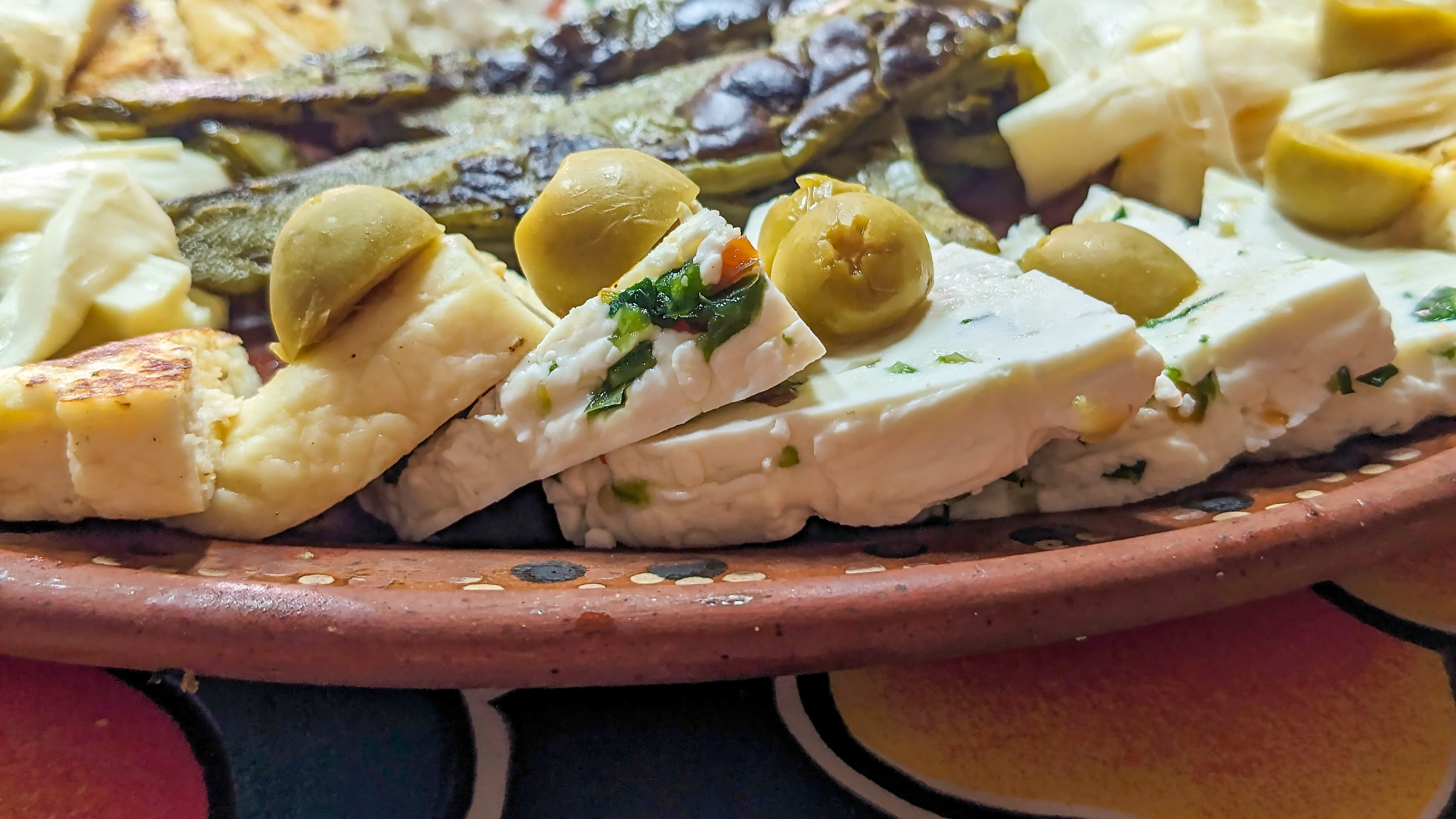
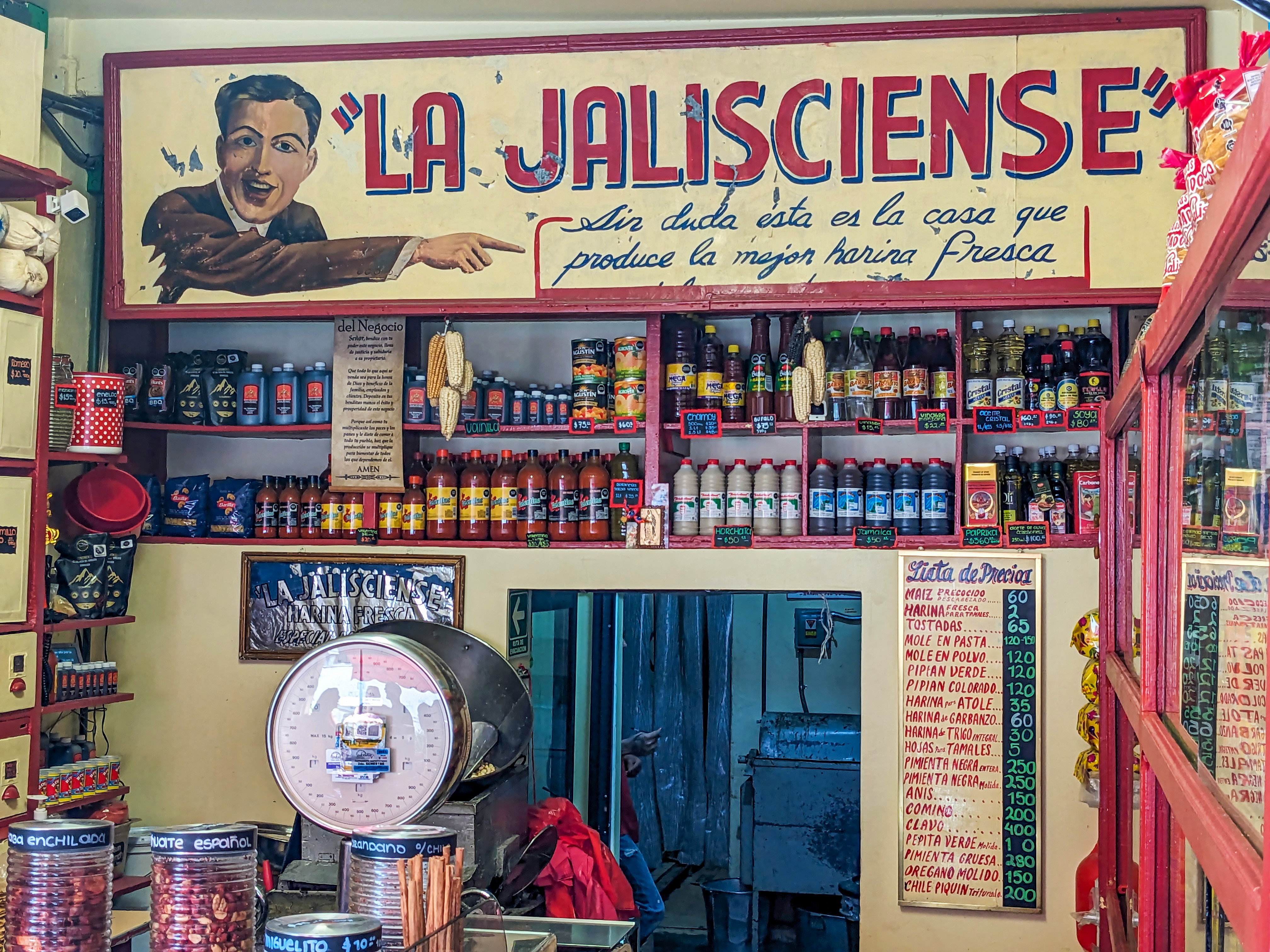
Together with Beto Estúa and his team, we enjoyed a four-course dinner paired with agave spirits. Most of what we tasted was mezcal; unbeknownst to most Americans, mezcal actually pre-dates what we now call tequila. So, rather than thinking of mezcal as “smoky tequila,” you’d be more correct to consider tequila a not-smoky mezcal!
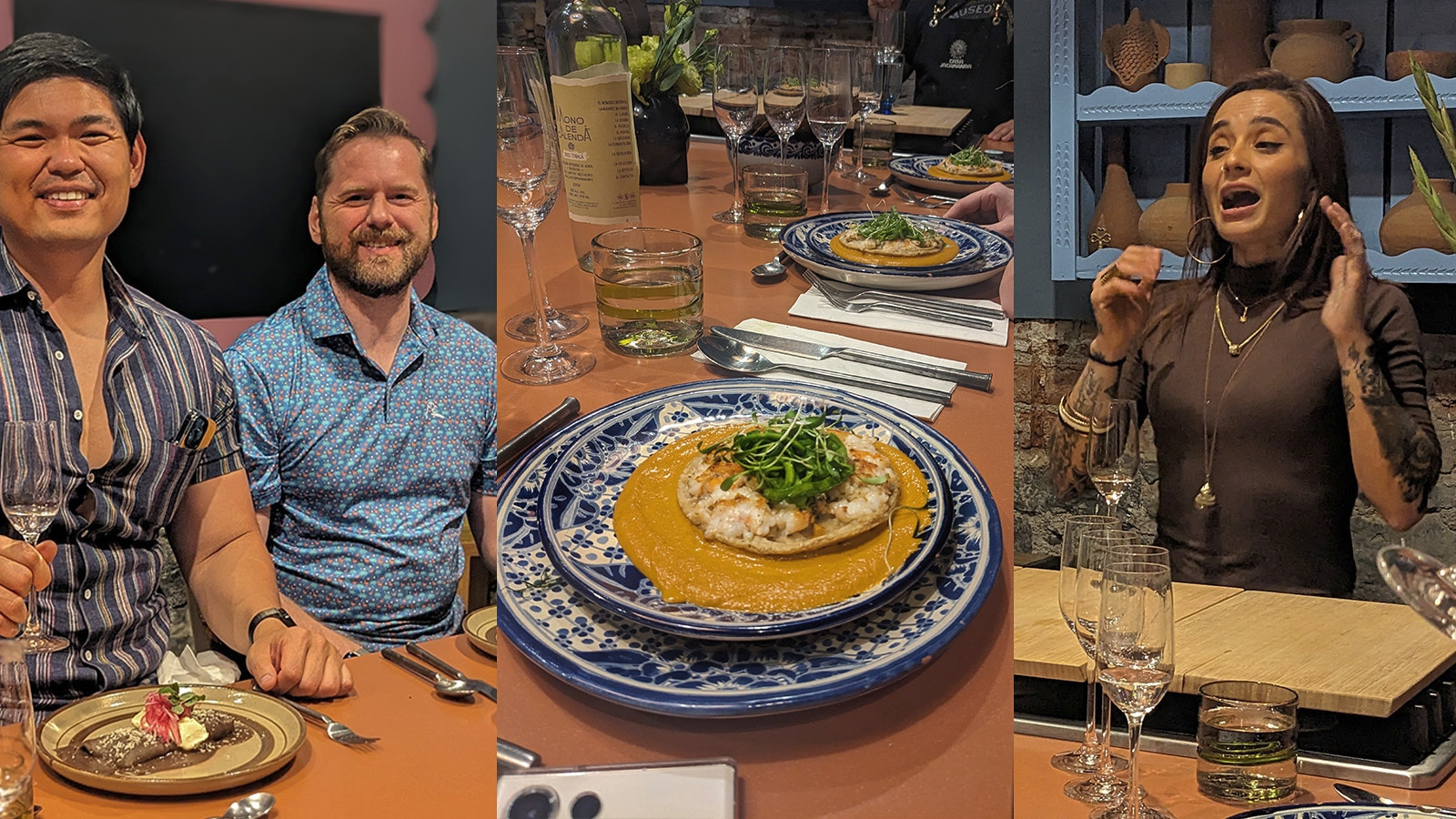
Later that week, we visited the agricultural area of Xochimilco, which boasts canals that date back to a time when the area surrounding Mexico City was home to an enormous lake. There, you can travel via trajinera (a wide-bottomed boat) to chinampas (human-made islands), where you’ll find farms like the one run by Arca Tierra, an agrotourism collective with a focus on community and sustainable practices.
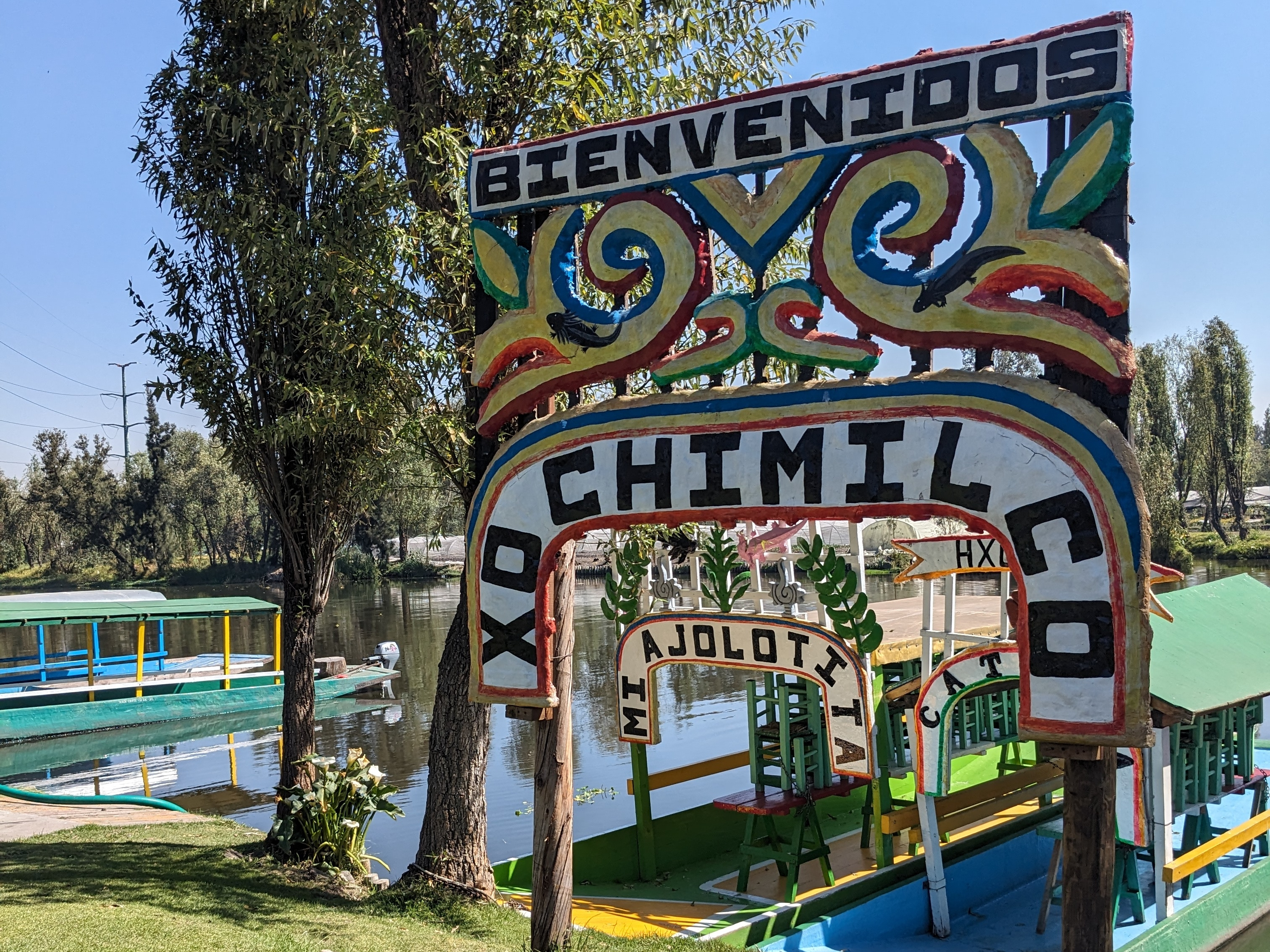

After watching the sun rise over the mountains that surround the city, we made a breakfast of tetelas—triangle-shaped pockets of fresh masa stuffed with beans—plus fresh beets, kale and radishes we pulled from the fields, and café de olla, a local preparation of coffee and raw sugar called piloncillo.
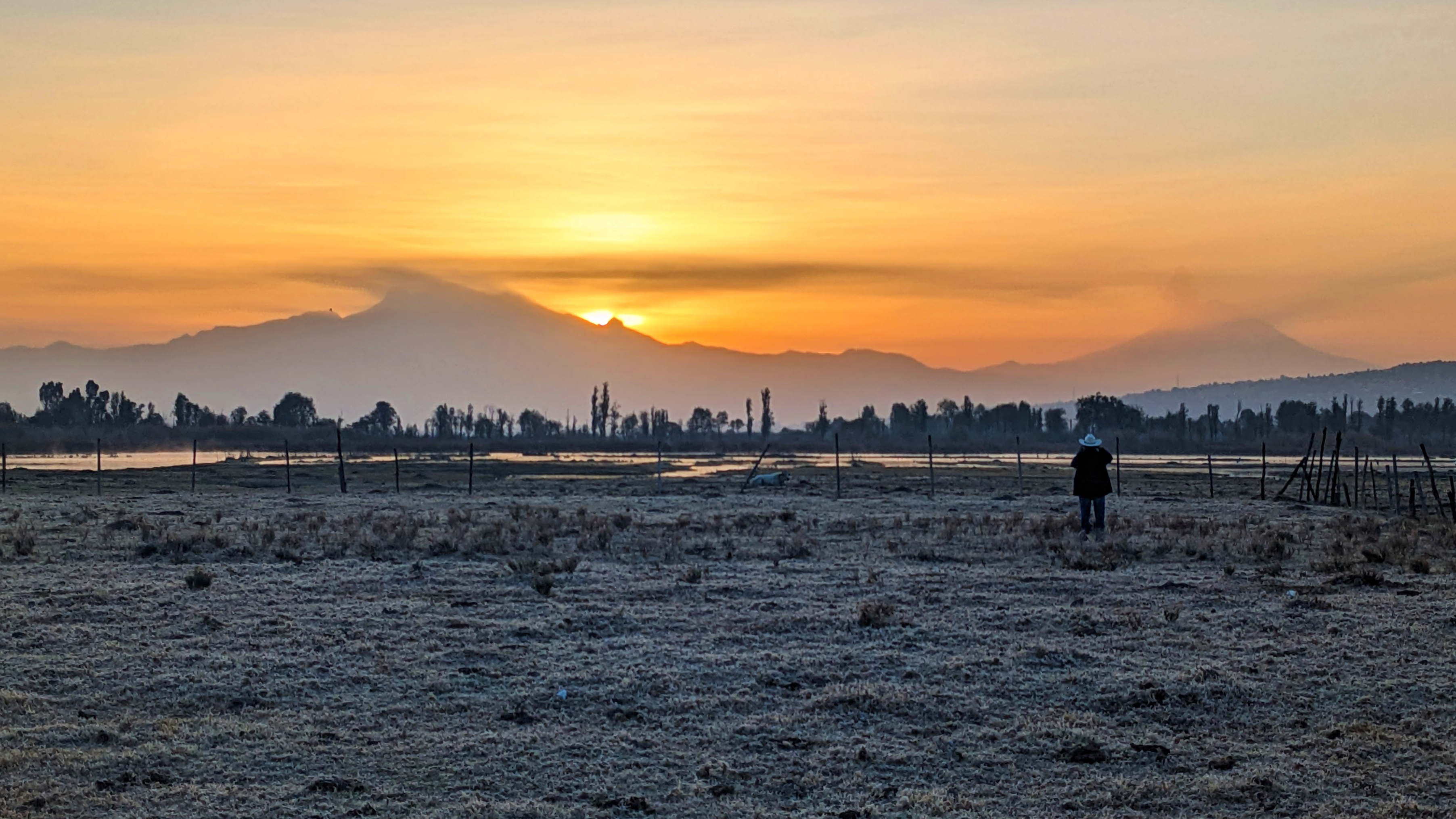
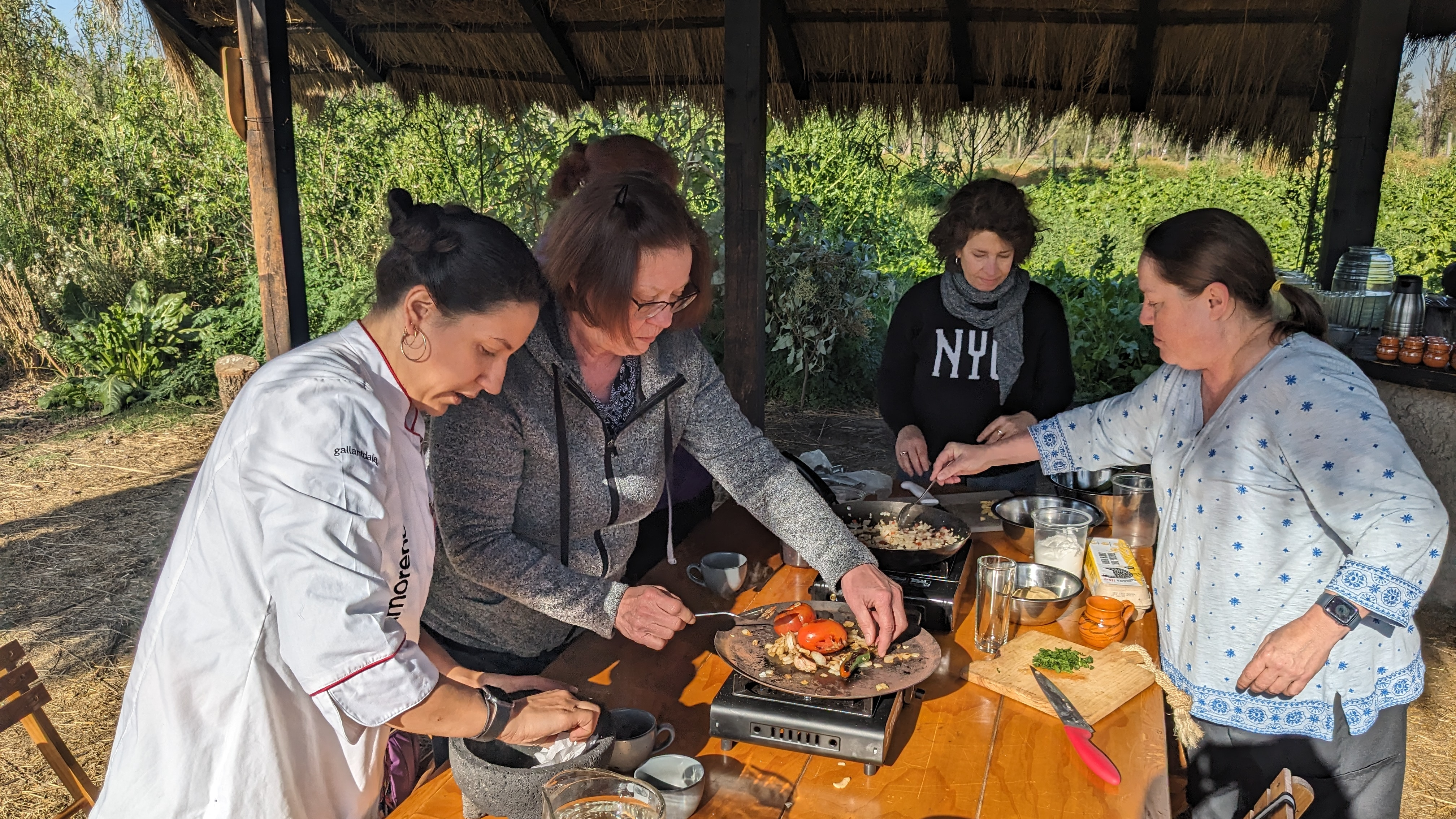
After a morning on the canals, we spent the evening in the busy, metropolitan Roma Norte neighborhood, home to editorial director J.M. Hirsch’s favorite Mexico City bar, Licorería Limantour. J.M. didn’t lead us astray. We were met there by two of Limantour’s bartenders, who had prepared batches of their Al Pastor Margarita for us to try. These margaritas are inspired by al pastor tacos, which are made by marinating thin slices of pork in a blend of chili peppers and pineapple, among other things. In the cocktail version, Limantour infuses gin with a blend of fresh herbs, combines it with orange liqueur, pineapple and lime juice and tequila and finishes it with a chili salt rim. (Want to make your own? The recipe is waiting for you below.)
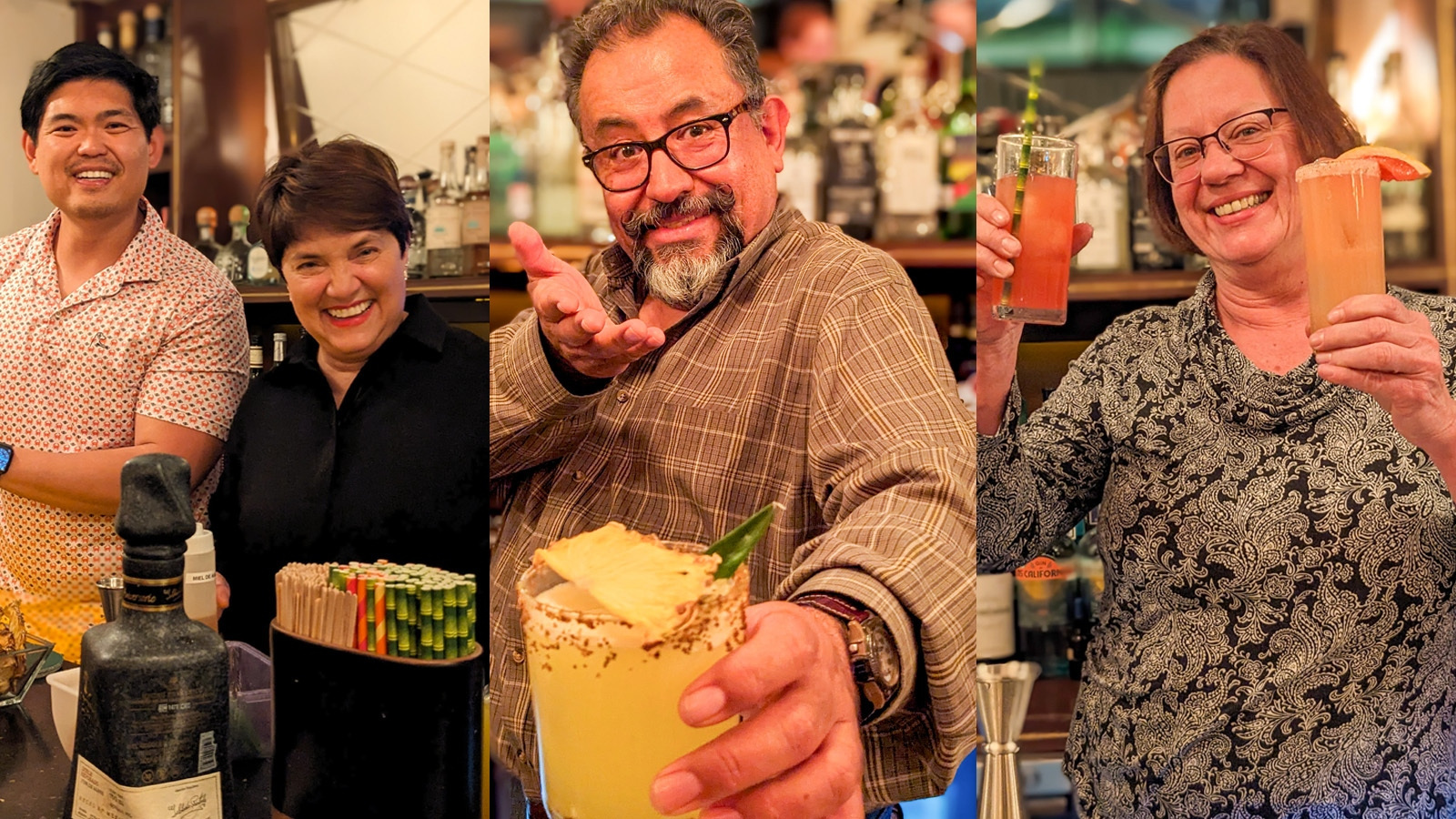
We got another glimpse of sustainable, thoughtful production at Maizajo, which uses only native corn to produce yellow, red and blue masa. Located in the trendy Condesa neighborhood, Maizajo gives diners two options: a casual stand-up counter where you can watch the corn moving through the process of being nixtamalized, ground, kneaded and transformed into tortillas, sopes, tetelas, quesadillas and more; or an airy, sun-dappled upstairs space complete with an enormous custom-made comal anchoring one end of the dining room. The highlight of our meal at Maizajo was definitely the tamal de boda, or “wedding tamal,” served with a Yucatecan salsa called kol.
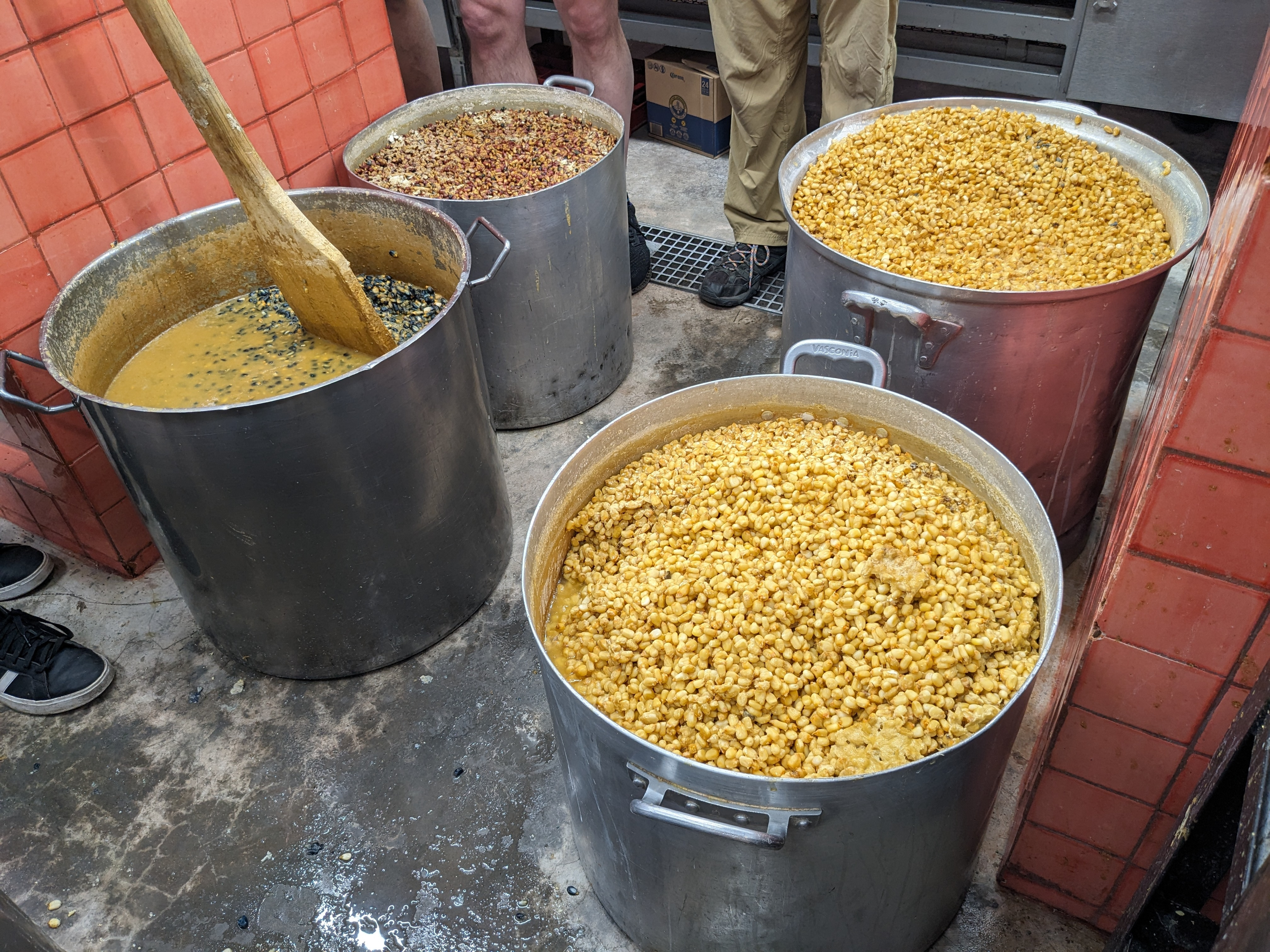
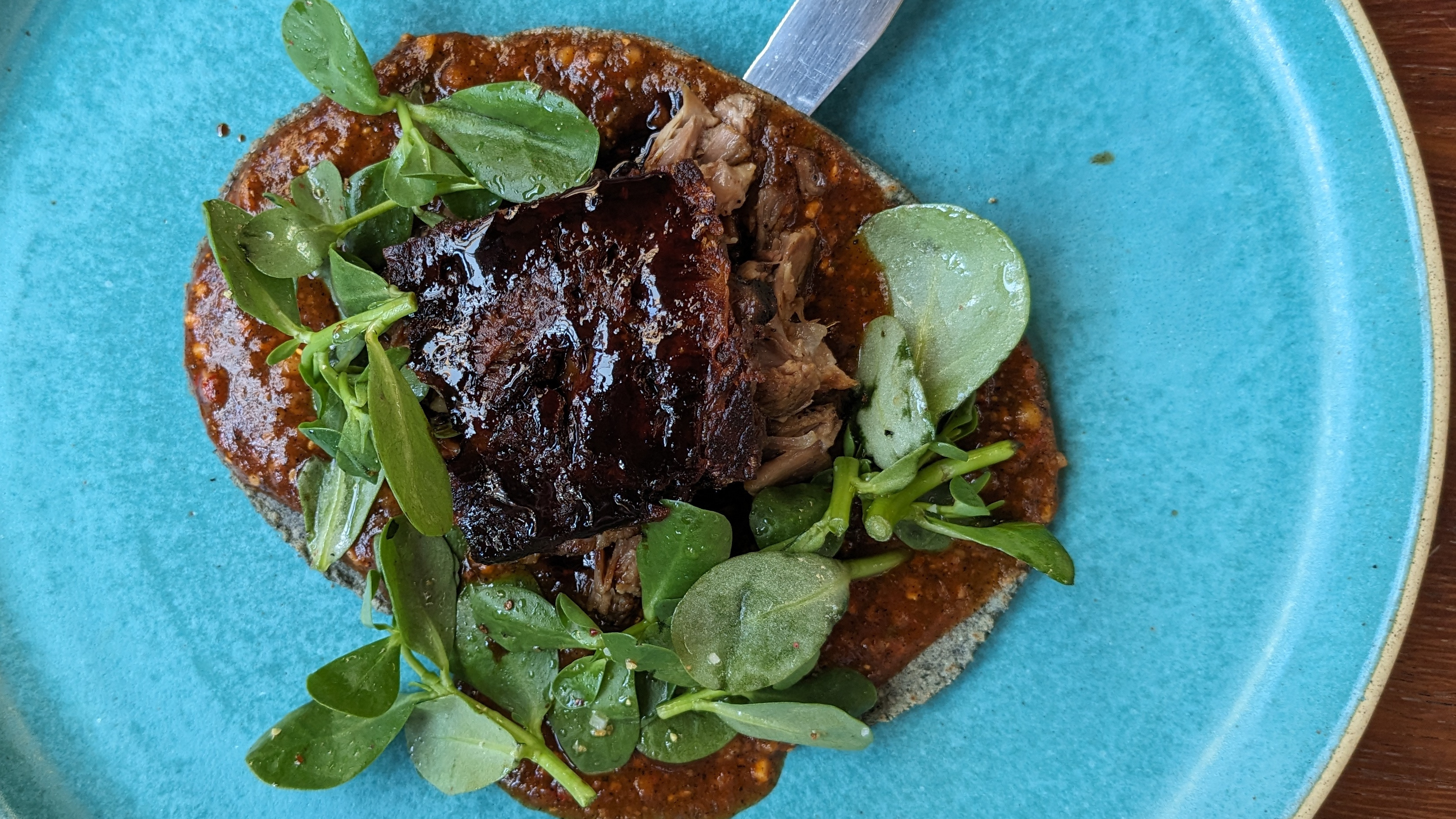
Our week also included a trip up into the hills of Milpa Alta, Mexico City’s southernmost borough. This rural area is filled with family farms that grow, among other things, the maguey plant from which the pre-Colonial drink pulque is made. Historically drunk only by the nobility and pregnant women, much of Milpa Alta’s pulque nowadays is consumed either by the families who produce it or sent to pulquerías across Mexico City.
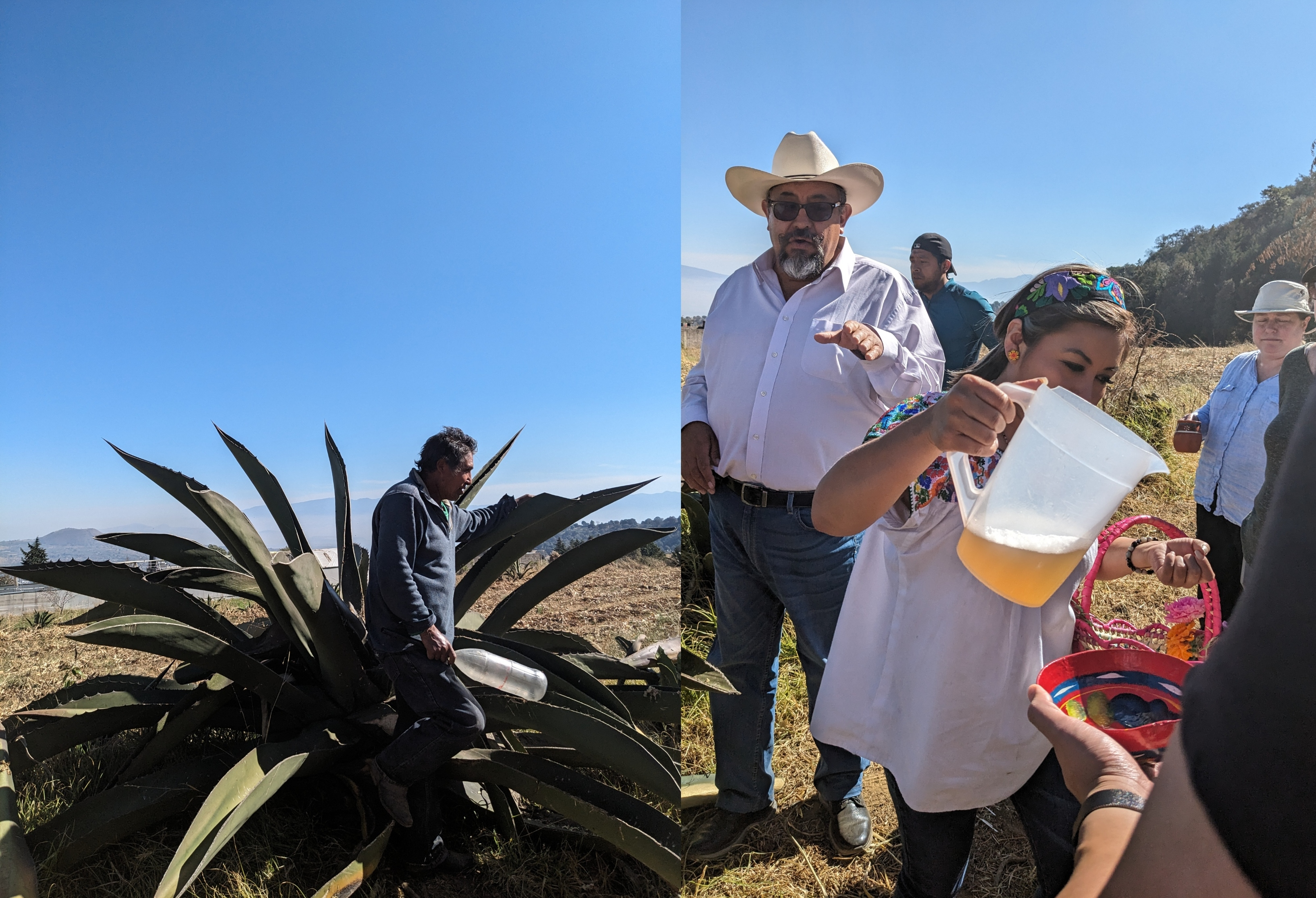
After sipping our pulque high in the terraced fields, we made our way down into the town of San Pedro Atocpan, a quiet village that has distinguished itself as the producer of up to 90% of the mole consumed across Mexico City. Third-generation mole guide Maira put us to work frying nuts and seeds, crushing discs of chocolate, and chopping the onions, apples, plantains and more that go into the mole especial.
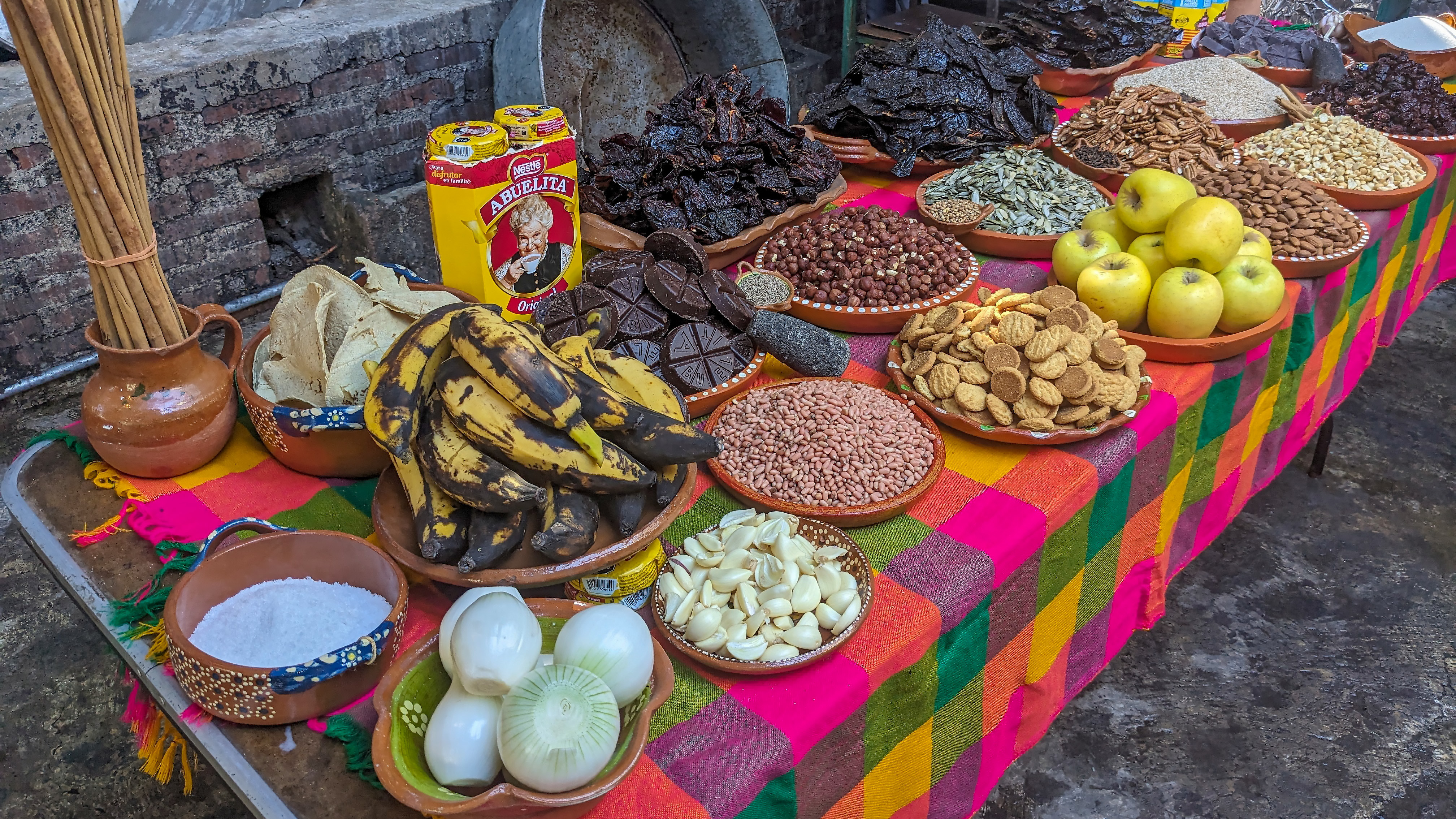
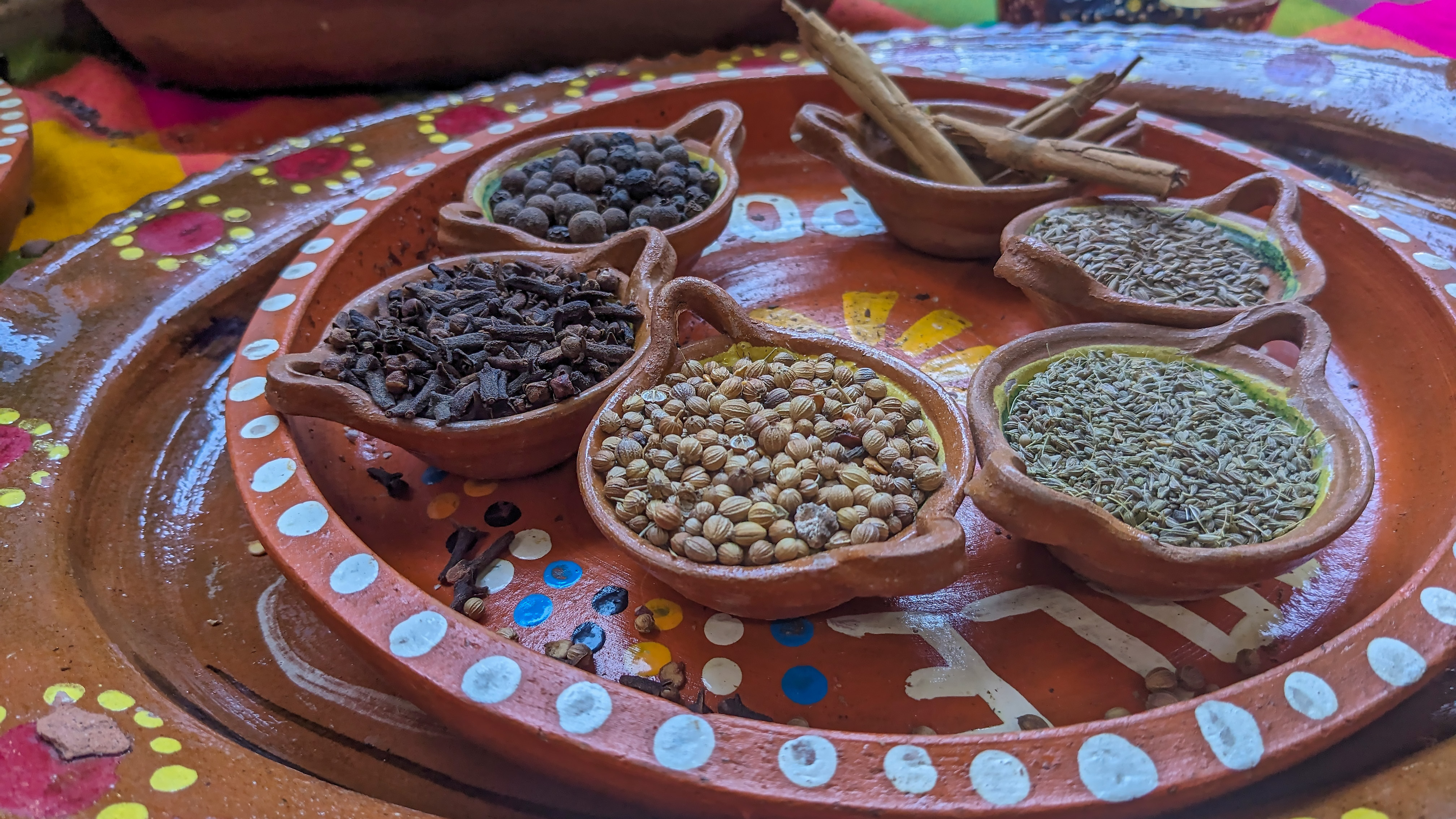
After being ground in her family’s mill, the resulting powder can be turned into creamy, rich mole sauce in 20 minutes or less, thanks to all the work that goes into its preparation.
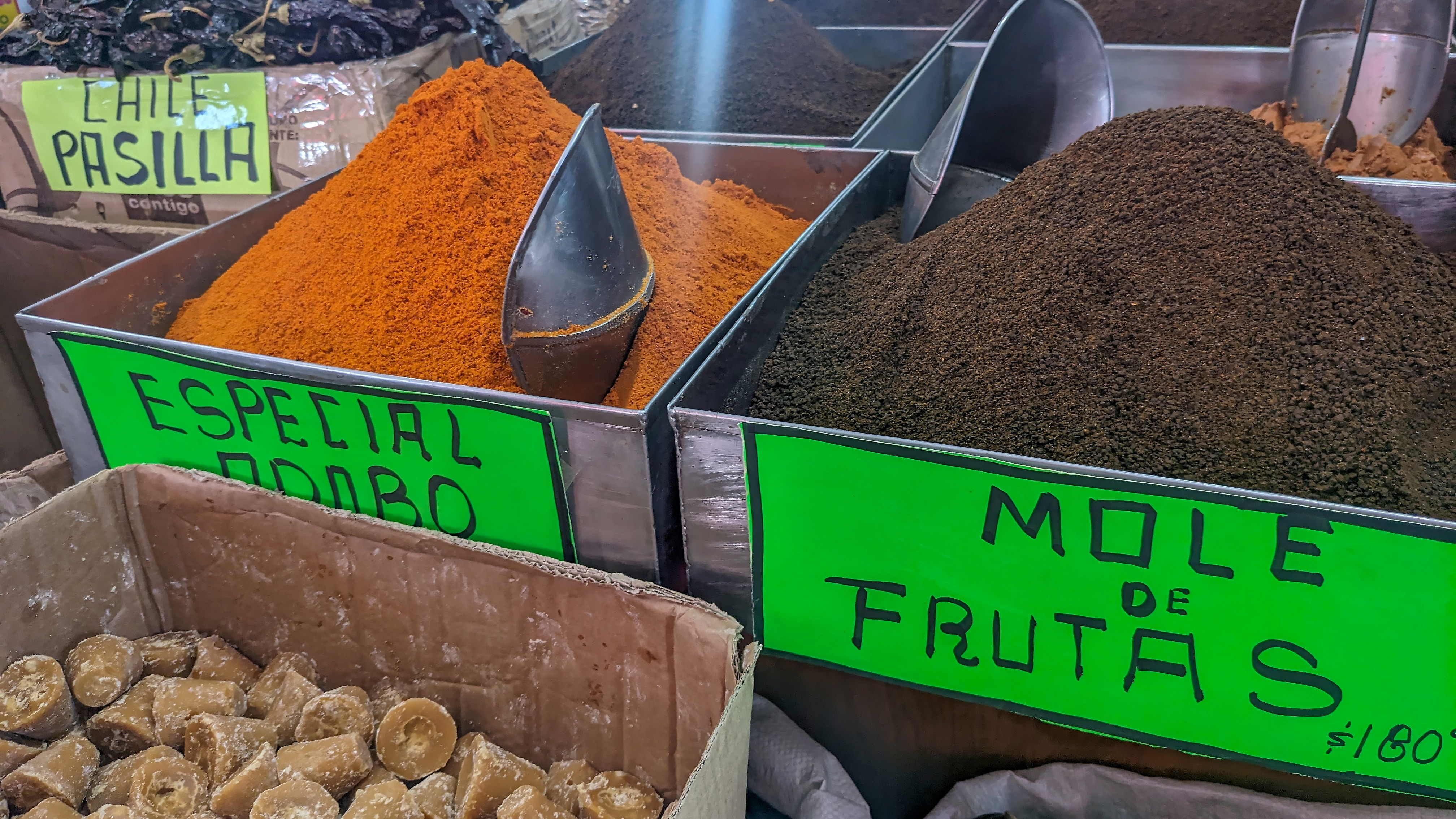
On our final night in Mexico City, we traveled to the neighborhood of El Pedregal, a word that means “scree” in Spanish, a nod to the fact that this area was covered in volcanic stone until the 1940s. Inside a house—or, more specifically, in the home’s renovated stables—designed by celebrated Mexican architect Luis Barragán, we had dinner at Tetetlán, a restaurant led by 27 year-old Norberto Ruiz.
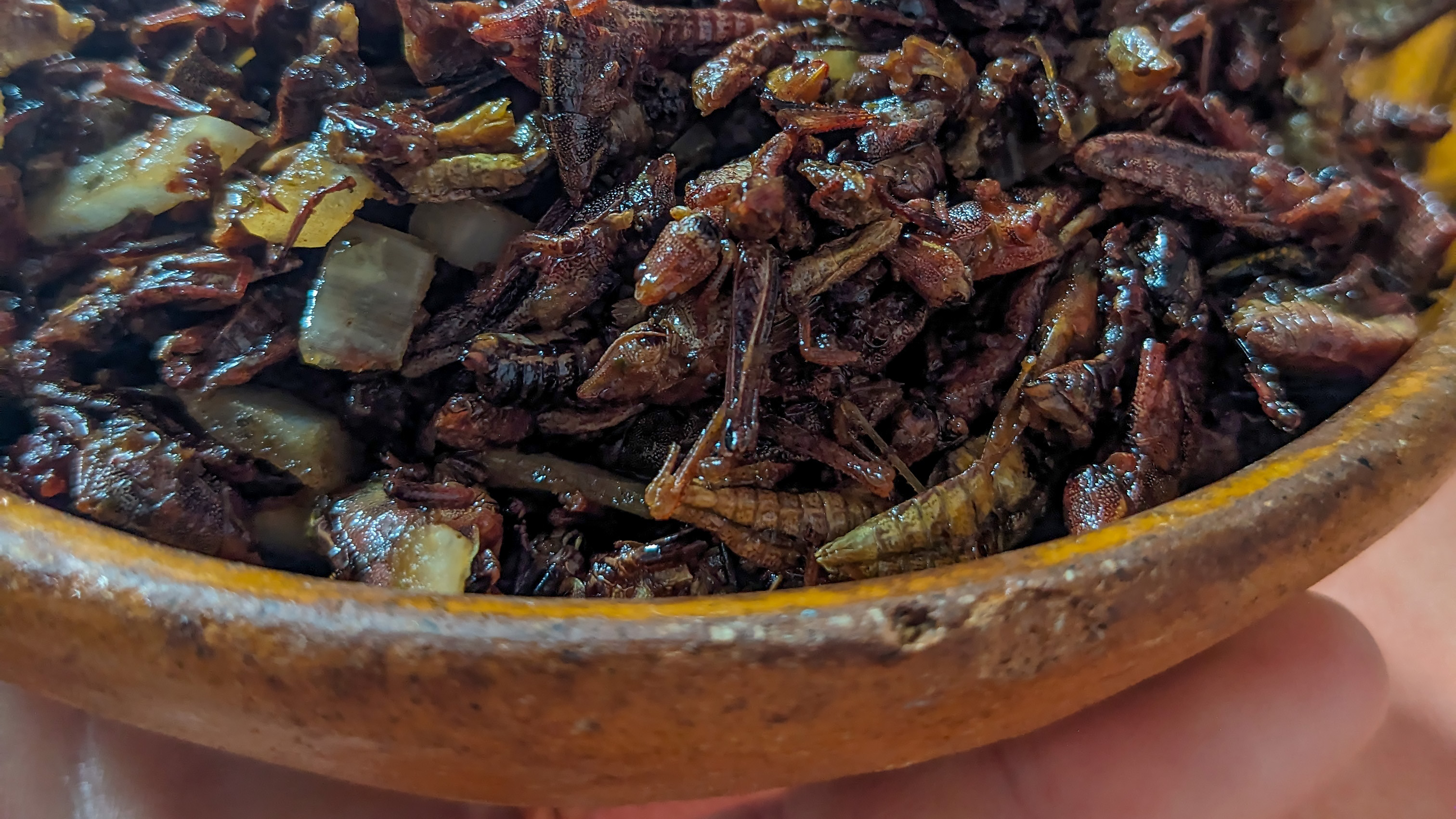
Our meal featured crispy ant eggs and chapulines—crunchy spiced crickets—as Norberto is a fan of eating insects. On the restaurant’s grounds, the sky was clear enough to see the stars and the air was cool, smelling faintly of fresh masa and smoky mole. In the small shop attached to the restaurant, you can purchase artisanal mezcal sold in recycled glass bottles made by a skilled glassblower. In line with the restaurants sustainability ethos, if you have one of those bottles, you can come back any time and have it refilled for about $30 USD—a steal for some of the best mezcal we tasted all week.
In the eight days of our tour, we found ourselves shoulder-to-shoulder in dense crowds, atop a quiet cactus-covered mountain, in the aisles of a market just waking up for the day, and on a brightly-colored boat twisting through canals as the sun rose. In all that time—from Juárez to Xochimilco, from Milpa Alta to El Pedregal—we never technically left the confines of Mexico City.
Margarita Al Pastor
- 1 lime wedge
- Tajín or another chile or chile blend of your choice, blended with salt and a pinch of sugar
- 2 sprigs fresh mint*
- 2 sprigs fresh basil*
- 2 sprigs fresh cilantro*
- 15 milliliters agave honey or syrup
- 60 milliliters tequila blanco
- 25 milliliters pineapple juice
- 15 milliliters orange liqueur (such as Cointreau)
- 15 milliliters lime juice
Rub the rim of a rocks glass with the lime wedge, then roll in the tajín, salt & sugar blend. Set aside.
In a cocktail shaker, combine the mint, basil, cilantro and agave honey. Muddle thoroughly to make a greenish paste. Leaving the muddler in the shaker, add the tequila, pineapple juice, orange liqueur and pineapple juice. Swirl your muddler to remove any bits of herbs from it, then set it aside. Add several large ice cubes, cover the shaker and shake vigorously until it’s well chilled, at least 30 seconds. Double strain into the rocks glass over several large ice cubes.
*If you’d like to have the same bright-green cocktail that they serve at Limantour, you’ll need to blend your herbs with the tequila, rather than just muddling. This doesn’t tend to work well with a single batch; multiply it by 2-4 and have a party! Just combine herbs and tequila in a blender and blend until smooth, adding more herbs as needed to get bold color. To make sure you don’t have any herb bits in your cocktail, pour the tequila & herb blend through a fine mesh strainer when measuring it into your shaker.
Sign up here to get first dibs on our 2025 culinary tours the moment they’re announced!
Join the conversation on Facebook, Instagram, TikTok and Pinterest.
And if you're looking for more Milk Street, check out our livestream cooking classes with our favorite chefs, home cooks and friends for global recipes, cooking methods and more.
